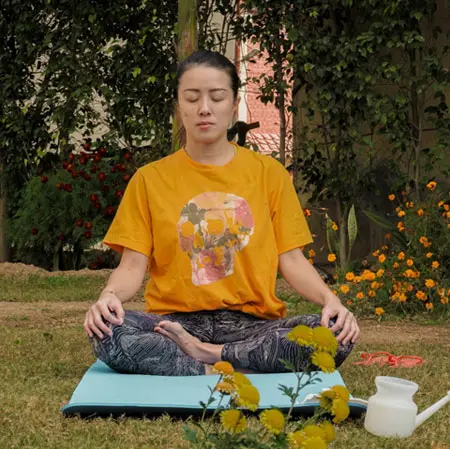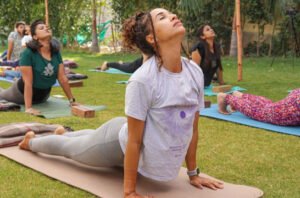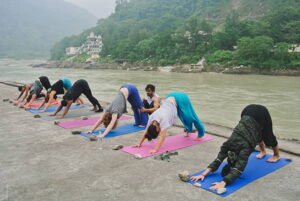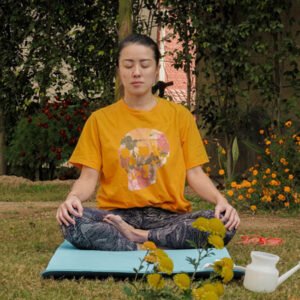Most of the population today, rely on fast food. It is due to both spouses working for supplemental income, that leads to a higher consumption of readymade foods or processed foods by the parents as well as the children. This has also led to a spurt in childhood obesity. For the unversed, you need to know, that the liver is the second-largest organ of the human body. It is of the size of a football. The liver is responsible for removing the waste matter from the nutrients. It also produces bile juice, which can carry the toxins away from the body.
Millions of people in the US have liver disease today. Many people silently suffer from Non-Alcoholic Liver Disease. This is directly related to heart ailments, cholesterol, and obesity, as well. All those who are dependent on alcohol, also suffer from liver diseases, like Alcoholic Liver Disease. There are several tell tale signs of lover diseases, like pain on the right side of the abdomen, changes in the colour of urine, nausea, and Edema.
If you see such symptoms, you should act fast. There are tonnes of ways, that western medicine advisors can help you with. However, we have the gift of a natural science, which if utilized properly can lead to greater benefits. Here we are talking about Yoga. Yoga is one of the ancient sciences that can rectify your liver issues, and also help with preventative care. You can also head to a yoga retreat in Rishikesh for detoxification.
Today, you will learn about a few yoga asanas and other kriyas, that can help you cure liver diseases and also for maintenance, in the long run.
Read More: Why Is Kundalini Yoga Dangerous? The Truth About Its Risks and Rewards
Yoga Asanas For Liver Disorders
⦁ Adho Mukh Svanasana – This is also popularly called the Downward Facing Dog pose. You have to start this yoga asana on all fours. The entire body weight will be supported on the feet and the hands. The palms have to be directly below the shoulders, and the feet below the hips. The body will form an inverted V-shape in this asana. The buttocks will be high up in the air.
The hands will be shoulder-width apart, with the fingers pointing towards the front. Your gaze will be either on the navel, or the big toes. You can hold the pose for some time. This is an excellent asana for your liver. As the blood circulation is reversed in this pose, and the liver gets a fresh infusion of blood.
⦁ Shalabhasana – This is another pose, which is worth mentioning here. You will find the asana or posture, to resemble the locust or grasshopper. The pose starts, with the incumbent lying down on the floor, with the belly in contact with the same. The hands are by your side, and can be placed below the thighs, with the palms pointing downwards. The legs should be held straight. Your chin or the forehead will be on the ground.
You have to inhale and slowly lift both the legs off the ground. Hold the position for 5-10 breaths. Slowly bring the legs down, after the required time has elapsed, and exhale. Your abdominal organs get a good massage in this posture. You can learn such asanas in great detail and with proper guidance at a yoga teacher training in Rishikesh.
⦁ Balasana – It is another yoga asana, which can aid you in correcting all kinds of liver ailments. This is a very easy yoga asana, which you can do today. Kneel down on the mat in Vajrasana. Sit on your heels. Inhale and raise the arms on both sides. Exhale and bring the upper body downwards. Bring the forehead to touch the ground. The back must also be straight. This asana gives an excellent stetch to the body. Your abdomen will also get a good massage, and so will the liver.
Pranayamas For Liver Disorder
You can also try out several breathing techniques, as a part of Yoga therapy.
Anulom Vilom is one of the Pranayamas, which you can practice. You can sit in any meditative posture, that suits you. The back should be straight and not humped, and the shoulders should be relaxed.
Place the palms on the knees, and practice this breathing technique. In this technique, you have to breathe in through one nostril and breathe out through the other. In the same way, you can breathe in through the other and close it, and breathe out through the alternate nostril. This makes a cycle.
Likewise, you can also try Kapalbhati, which is a Skull Shining kriya. It is also a Shatkarma Kriya. You have to basically practice forceful exhalation, as against peaceful inhalation in this kind of breathing. You will gain a lot of benefits after doing this kriya.
You must also go for a Sattvic diet, to enjoy good health throughout life.
Read More: Everything You Need to Know About Kundalini Yoga Teacher Training
Deepen Your Yoga Practice with Hari Om Yoga Vidya School
Located in the heart of Rishikesh, Hari Om Yoga Vidya School is a place where ancient yogic wisdom meets modern teaching techniques. As a top yoga school in Rishikesh, we are committed to providing authentic, immersive yoga education in a peaceful, spiritual setting. Recognized as one of the best yoga schools in Rishikesh, we offer structured training programs designed to help you evolve in your practice, whether you are a beginner or an experienced yogi.
If you’re searching for a yoga school in Rishikesh that focuses on holistic learning, experienced teachers, and a supportive community, look no further!
Explore Our Yoga Teacher Training & Retreats
At Hari Om Yoga Vidya School, we offer a range of courses tailored for different levels of practitioners:
✅ 100-Hour Yoga Teacher Training in Rishikesh – A foundational course for those looking to begin their yoga journey.
✅ 200-Hour Yoga Teacher Training in Rishikesh – An internationally recognized certification for aspiring yoga teachers.
✅ 300-Hour Yoga Teacher Training in Rishikesh – Advanced training to deepen your practice and refine your teaching skills.
✅ 7-Day Yoga Retreat in Rishikesh – A rejuvenating escape into yoga, meditation, and self-discovery.
✅ 10-Day Yoga Retreats in Rishikesh – A transformative experience that blends yoga, relaxation, and Himalayan serenity.
Join us for a life-changing experience and become part of our global yoga family! 🌿✨






